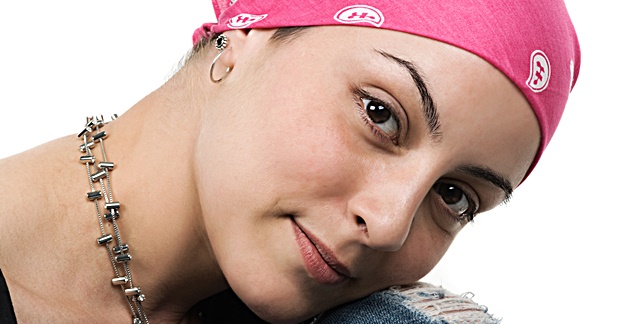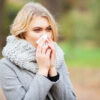When Lily was diagnosed with cervical cancer at age 27, she blamed herself. “Why hadn’t I taken care of myself properly?” she thought. She had regularly skipped her annual Pap smears—a common procedure, in which the doctor collects cells from the vagina wall to test for signs of cervical cancer. “I didn’t think I needed to go,” she said. But when she started bleeding and experiencing daily pelvic pain, she finally visited her OB/GYN and found out that she had cervical cancer. She’s been treated, but regrets having postponed screening because the disease left her infertile. Lily is now an advocate, raising awareness of the importance of preventive care to other women. “You don’t want to end up in a situation like mine,” she says.
January is Cervical Health Awareness Month, a good time to review ways to keep your cervix and vagina healthy.
The cervix is the narrow passage connecting your vagina to your uterus. It acts as a barrier to infection, explains Cheruba Prabakar, MD, a gynecologist in Oakland, Calif. It can get infected or suffer the effects of an out-of-balance microbiome itself. Having unprotected sex, cleaning the vagina with soaps you don’t need and taking drugs like antibiotics, antifungals and immunosuppressants, can raise your susceptibility to microbes, like viruses and fungi. Gone untreated, these infections can have long-lasting impacts, such as an increased risk of cervical cancer or infertility.
One of the most insidious of these infections is human papilloma virus (HPV), which can go undetected for years and eventually cause cervical cancer. Other infections that can threaten your cervical health are sexually transmitted infections (STIs), such as chlamydia, gonorrhea and syphillis, and yeast infections. Often, these infections can take hold with few or no notiecable symptoms at first, making screening especially important.
Preventing Yeast Infections and STIs
One of the most important things you can do to maintain cervical health is to visit your gynecologist annually. Your gynecologist can advise you on how often you may need a Pap smear.
“Despite the Pap guidelines [recommending screening] every three to five years, another misconception as that ‘Oh I don’t need to have a gynecologist appointment for five years,’ but no, you actually do need to see some doctor who is going to do a pelvic exam and a speculum exam to look at your cervix,” says Prabakar.
Steps you can take to prevent infection and keep your cervix healthy are :
- Washing your vagina with water only and not using soap or other products.
- Avoiding douching.
- Eating probiotic foods, like yogurt (make sure the label promises live bacteria), and kombucha, especially if you’ve been prescribed antibiotics.
- Speaking with your doctor before you reach for antibiotics or antifungals, if you suspect a yeast infection.
- Using a barrier method, like condoms, to protect yourself from STIs.
- Limiting your intake of sugar and processed starch. “A lot of people don’t know that diet has a lot to do with cervical and vaginal health,” says Michael Tahery, MD, a urogynecologist in Los Angeles. “If you eat a lot of sugar and processed starches, and don’t drink enough water, that tends to increase your risk of recurrent yeast infections and bacterial infections.”
- Quitting smoking. “Smoking actually accelerates the presence of HPV or other infections in the cervix,” says Prabakar.
- Getting an HPV vaccine, if you are eligible.
HPV
HPV, the most common STI in the US, exists in more than 40 different strains. The Centers for Disease Control and Prevention (CDC) states that annually about 14 million people contract the infection, which can invade the mouth and genitals, each year. Luckily, 90% of people clear the infection on their own within two years. Others, however, develop genital warts as well as cancers of the cervix, throat, anus, vulva, vagina or penis.
Treatment for HPV
There is no treatment for HPV itself. However, there are treatments for the genital warts or precancerous cells, if they’re found early enough. For genital warts caused by HPV, your doctor may prescribe topical creams or recommend surgical removal. The topical creams include:
- Aldara, Zyclara (imiquimod)
- Condylox (podophyllin, podofilox)
- Trichloroacetic acid
- Veregen (Sinecatechins)
Side effects of creams to treat genital warts are usually localized and commonly include redness, irritation, itching, sores or pain. Imiquimod can cause some more systemic (whole body) side effects like cough, fatigue, rashes and body aches.
If your doctor finds precancerous cells during your Pap smear, he or she may recommend a procedure to remove them.
Chlamydia, Gonorrhea and Syphilis Symptoms
Chlamydia, gonorrhea and syphilis are bacterial infections transmitted through sexual contact, which can be treated with a course of antibiotics.
If left untreated, chlamydia may spread to your uterus and Fallopian tubes, causing infertility. If you are pregnant, it may put you at risk of a preterm birth and of spreading the infection to your newborn. Having syphilis may lead to sores, rashes and flu like symptoms early on. Even if these symptoms go away on their own, you still need treatment. The infection can remain in the body without causing symptoms, and later damage your heart and brain. Late-stage syphilis can even be fatal.
Treatment for Chlamydia and Gonorrhea
Doxycycline is the antibiotic most commonly used to treat chlamydia. For syphilis, doctors usually recommend penicillin.
Unfortunately, most gonorrhea infections today are caused by strains of antibiotic-resistant bacteria. In that case, the CDC recommends treating it with intramuscular injections of the antibiotic ceftriaxone. This drug can cause chest pain, black stools, fever, sores, shortness of breath, weakness and fatigue.
To learn more about the potential side effects of antibiotics, see our antibiotic and antiviral page.
Why Yeast Infections Happen
It’s not always obvious why you get a yeast infection. Some people are more prone to yeast infections than others. They may happen if you stay in tight workout clothes for a long time after exercising. Yeast infections can also happen as a side effect of medications. For example, you can get yeast infections from antibiotics. One side effect of antibiotics is that they can disrupt your natural microbiome, leaving you at heightened risk for developing vaginal yeast infections, an overgrowth of fungus that normally exists in your vagina, It can also cause severe itching, redness and abnormal discharge and irritate the cervix.
Yeast Infections Treatment
Yeast infections respond to over-the-counter antifungals, such as Monistat, but, Tahery warns, that these drugs can make your vaginal infection worse if a doctor hasn’t confirmed that fungus is truly the cause of symptoms. Bacterial infections can cause similar symptoms. Taking an antifungal can worsen these types of infections.
“If it is a yeast infection, well, [OTC antifungals] do help, but in the majority of cases it’s not [actually a yeast infection]. And then what happens is they kill off the good organisms, and then you set yourself up for recurrent infections,” says Tahery.
OTC antifungals include:
- Monistat (miconazole)
- Lotrimin (clotrimazole)
- Vagistat-1 (tioconazole)
- Gynazole-1 (butoconazole)
Side effects of OTC antifungals include:
- Headaches
- Missed periods
If your vaginal pain gets worse or if you experience stomach pain or develop a fever or hives, call your doctor right away.
Steps to prevent yeast infections:
- Reduce your intake of sugar and starch.
- Change clothes immediately after exercising or swimming.
- Eat probiotic foods daily like yogurt, kefir and kimchi.






